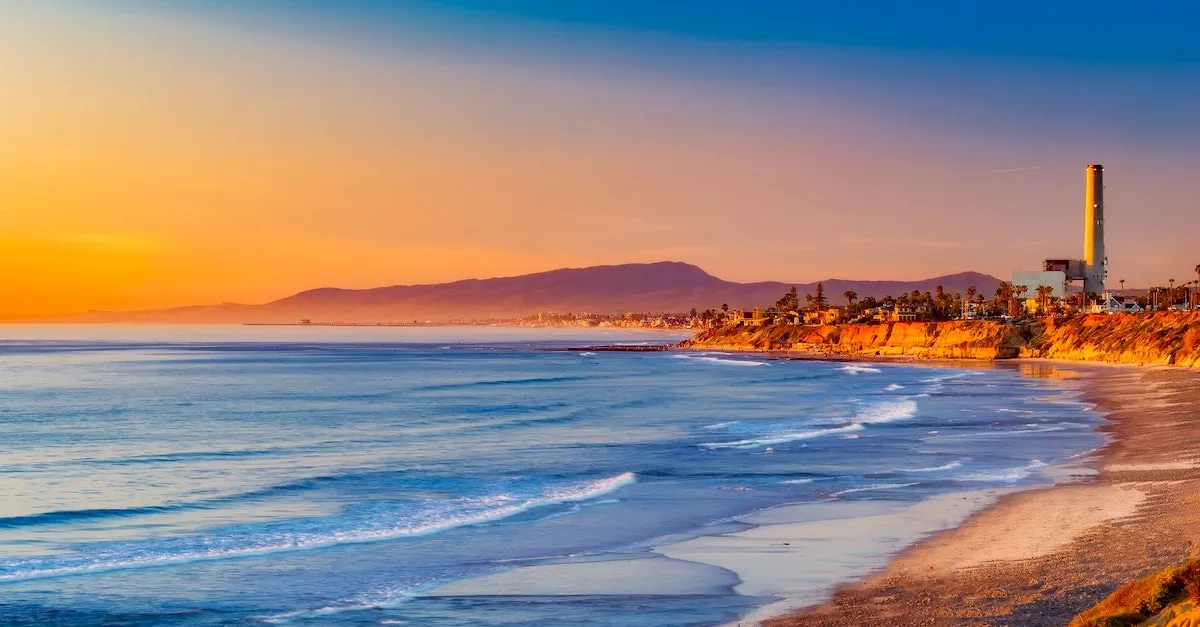What Does California Look Like? A Detailed Look At The Diverse Landscapes Of The Golden State
California has captured the imagination of people around the world with its stunning natural beauty and diversity of landscapes. From rugged coastal cliffs and endless miles of beaches to mountain ranges, vast deserts, fertile farmland and dense forests, the scenery across the state is incredibly varied and picturesque. If you’re wondering exactly what California looks like, read on for a comprehensive overview of the different geographical regions and terrains that make up this iconic west coast state.
Coastal California
When picturing California, it’s hard not to imagine the stunning coastline that stretches for over 840 miles. Coastal California offers a diverse range of landscapes, from sandy beaches to majestic cliffs and lush forests.
Let’s take a closer look at the different regions that make up this picturesque part of the Golden State.
Southern California Beaches
Southern California is famous for its beautiful beaches, attracting millions of visitors each year. From the iconic Santa Monica Pier to the pristine shores of Laguna Beach, there is something for everyone.
Whether you’re looking to catch some waves, soak up the sun, or enjoy a beachside bonfire, Southern California’s beaches offer endless opportunities for fun and relaxation.
Central Coast Cliffs and Valleys
The Central Coast of California is known for its dramatic cliffs, rolling hills, and fertile valleys. The picturesque Big Sur coastline, with its rugged cliffs and breathtaking ocean views, is a must-see for nature lovers.
Further inland, the Santa Ynez Valley is home to vineyards and wineries, offering a taste of the region’s renowned wine country. Exploring the Central Coast is like stepping into a postcard-perfect landscape.
Northern California Redwood Forests
Heading further north, you’ll find yourself in the enchanting world of the Northern California Redwood Forests. These ancient giants, some reaching heights of over 300 feet, create a magical and awe-inspiring atmosphere.
Places like Redwood National and State Parks provide visitors with the opportunity to hike among these towering trees and immerse themselves in the tranquility of nature.
For more information on California’s diverse landscapes, you can visit the official website of the California Department of Parks and Recreation at https://www.parks.ca.gov/.
Central Valley
Stretching over 400 miles in the heart of California, the Central Valley is a region known for its vast stretches of flat, fertile farmland. This expansive valley is flanked by the Sierra Nevada Mountains to the east and the Coastal Ranges to the west, creating a unique microclimate that is ideal for agriculture.
Flat, Fertile Farmland
The Central Valley is characterized by its flat topography, making it perfect for large-scale farming operations. The rich soil, known as alluvial soil, is a result of sediment deposits from centuries of flooding from the nearby rivers.
This fertile land has made the Central Valley one of the most productive agricultural regions in the world.
The region is divided into two main sections: the Sacramento Valley in the north and the San Joaquin Valley in the south. The Sacramento Valley is known for its rice fields, orchards, and vineyards, while the San Joaquin Valley is famous for its extensive cotton, nut, and fruit orchards.
Diverse Crops and Orchards
The Central Valley is home to a diverse range of crops and orchards, thanks to its favorable climate and fertile soil. From almonds and pistachios to tomatoes and lettuce, the region produces a wide variety of fruits, vegetables, and nuts that are distributed both domestically and internationally.
The Central Valley is especially known for its citrus production, with California being the largest producer of fresh citrus in the United States. Oranges, lemons, and grapefruits thrive in the mild winters and hot summers of the region, resulting in juicy, flavorful fruits that are enjoyed by people all over the world.
The agricultural industry in the Central Valley is not only important for the state’s economy but also plays a crucial role in feeding the nation. With its vast expanse of farmland and diverse range of crops, it is no wonder that the Central Valley is often referred to as the “breadbasket of the world.”
To learn more about the Central Valley and its agricultural significance, you can visit the official website of the California Department of Food and Agriculture.
Sierra Nevada Mountains
The Sierra Nevada Mountains are a majestic range that stretches over 400 miles across eastern California. These mountains are known for their stunning snow-capped peaks, which provide a picturesque backdrop for many of the state’s iconic landscapes.
From the towering Mount Whitney, the highest peak in the contiguous United States, to the rugged beauty of the Mammoth Lakes area, the Sierra Nevada Mountains offer a wealth of natural wonders to explore.
Snow-Capped Peaks
One of the most awe-inspiring sights in the Sierra Nevada Mountains is the snow-capped peaks that adorn the landscape. These peaks are a result of the region’s high elevations and heavy snowfall during the winter months.
The snow creates a stunning contrast against the deep blue skies, making it a favorite destination for photographers and outdoor enthusiasts. Whether you’re hiking along the Pacific Crest Trail or skiing down the slopes of Lake Tahoe, the beauty of the snow-covered peaks is truly a sight to behold.
Pristine Lakes and Rivers
The Sierra Nevada Mountains are home to numerous pristine lakes and rivers that offer a refreshing escape from the hustle and bustle of city life. From the crystal-clear waters of Lake Tahoe to the tranquil beauty of Mono Lake, these bodies of water provide endless opportunities for boating, fishing, and swimming.
The rivers that flow through the mountains, such as the American River and the Kern River, are popular destinations for whitewater rafting and kayaking. Whether you’re seeking a peaceful retreat or an adrenaline-pumping adventure, the Sierra Nevada Mountains have something to offer.
Yosemite and Sequoia National Parks
Within the Sierra Nevada Mountains, you’ll find two of California’s most beloved national parks: Yosemite National Park and Sequoia National Park. Yosemite is renowned for its towering granite cliffs, breathtaking waterfalls, and ancient giant sequoia trees.
Visitors can hike to iconic landmarks such as Half Dome and El Capitan, or simply immerse themselves in the park’s natural beauty. Sequoia National Park is home to the world’s largest trees, including the famous General Sherman Tree.
The park also offers stunning vistas, scenic drives, and opportunities for hiking and camping. Both parks showcase the diverse landscapes and natural wonders that make the Sierra Nevada Mountains a must-visit destination.
For more information about the Sierra Nevada Mountains and the attractions they offer, you can visit the official websites of Yosemite National Park and Sequoia National Park.
Deserts
California is known for its diverse landscapes, and one of the most fascinating aspects of the state is its deserts. From the arid expanses of the Mojave Desert to the otherworldly beauty of Death Valley, these desert regions offer a unique and captivating experience for visitors.
Mojave Desert
The Mojave Desert covers a significant portion of Southern California, extending into Nevada, Arizona, and Utah. With its iconic Joshua trees and stunning rock formations, the Mojave Desert is a must-see destination for nature enthusiasts.
The desert’s unique ecosystem supports a variety of plant and animal species, including the elusive desert tortoise and the fascinating Joshua Tree National Park.
Death Valley
Death Valley, located in Eastern California, is one of the hottest places on Earth and holds the record for the highest temperature ever recorded. Despite its extreme conditions, this desert is home to a surprising array of life, including wildflowers that bloom after rare rainfalls.
Visitors can explore the vast salt flats, sand dunes, and canyons, and marvel at the breathtaking landscapes that make Death Valley a truly mesmerizing sight.
Joshua Tree National Park
Joshua Tree National Park is a unique desert landscape that combines the beauty of the Mojave and Colorado deserts. Named after the iconic Joshua trees that dot its landscape, the park is known for its otherworldly rock formations and picturesque hiking trails.
Visitors can enjoy rock climbing, stargazing, and even camping in this stunning national park.
For more information on these desert regions, you can visit the Joshua Tree National Park and Death Valley National Park websites.
Northern California Forests
When it comes to forests, Northern California is home to some of the most breathtaking landscapes in the state. The region is known for its lush greenery and towering trees that create a sense of wonder and tranquility.
Coast Redwoods
One of the most iconic trees found in Northern California forests is the coast redwood (Sequoia sempervirens). These majestic giants can reach heights of over 300 feet, making them the tallest trees on Earth.
Walking through a coast redwood forest is like stepping into a fairytale, with sunlight filtering through the canopy and ferns carpeting the forest floor. The Avenue of the Giants, located in Humboldt Redwoods State Park, is a popular destination for visitors looking to experience the magnificence of these ancient trees.
Giant Sequoias
While coast redwoods are known for their impressive height, giant sequoias (Sequoiadendron giganteum) found in the Sierra Nevada range are known for their sheer volume. These massive trees can have trunk diameters of up to 40 feet and can live for thousands of years.
The General Sherman Tree, located in Sequoia National Park, is the largest living tree by volume in the world. Standing next to one of these giants is a humbling experience that truly puts the grandeur of nature into perspective.
Other Coniferous Trees
In addition to coast redwoods and giant sequoias, Northern California forests are also home to a variety of other coniferous trees. Douglas firs, western hemlocks, and ponderosa pines are just a few examples of the diverse tree species that thrive in this region.
These trees play a vital role in maintaining the health and biodiversity of the forest ecosystem.
If you’re planning a trip to Northern California, be sure to explore the stunning forests that this region has to offer. Whether you find yourself gazing up at the towering coast redwoods or marveling at the immense size of the giant sequoias, you’ll undoubtedly be left in awe of the natural beauty that can be found in the Golden State’s forests.
Conclusion
From sunny beaches to mountain peaks, fertile valleys to arid deserts, California contains incredible diversity across its landscapes. The state offers everything from snow-capped Sierra Nevada mountains to hot, dry deserts just a few hours apart. Its dramatic natural contrasts are part of what makes California such an iconic, beautiful place. With colossal trees, wildlife-filled national parks, endless farmland and more, the Golden State has astounding scenery around every corner.








